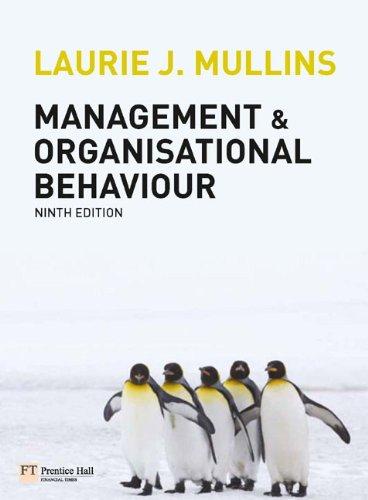In 2005 the word blog, meaning an on-line journal or web log which is regularly updated by
Question:
In 2005 the word ‘blog’, meaning an on-line journal or web log which is regularly updated by the author, entered the Oxford English Dictionary for the first time. Figures collected by internet monitoring organisations suggest that by the time the word made it into the dictionary there were about 30 million blogs in existence, and the numbers were increasing at the rate of about 70,000 per day.74 Add to this the emergence of social networking and communication sites such as Facebook and Twitter and there has never been such a wide range of possible ways to launch personal thoughts into a waiting cyberworld. Not all are about work, but the fact that life in the office or workplace is a significant part of many people’s lives means that many blogs, posts and tweets include references to work, bosses, colleagues and customers alongside other normal daily experiences, opinions about news events and so on. A number of blogs are specifically about work, and these are the ones which tend to hit the headlines, usually when an employee gets into trouble for airing their opinions about the organisation they work for in the blogosphere.
Your tasks
1. Using a basic model of expectancy theory such as that in Figure 7.8 or one of goal-setting theory such as Locke’s (Figure 7.12) assess the various motivational forces which might be operating when employees blog about their employer.
2. It seems that for some people, blogging about work can be viewed as a form of frustration-induced behaviour. Critically review the process of blogging as a method of expressing job dissatisfaction. How do you think managers should respond to cases of work-related blogging by frustrated employees?
3. Organisational responses to employee blogs or Facebook posts outlined in the case might be categorised as either hostile (sack and sue); accepting (control and monitor); or creative (encourage and use). For each of these approaches, identify some basic guidelines for handling cases such as those of Simonetti, Gordon and Sanderson, bearing in mind the motivational effects that your proposals might have on both bloggers and other employees.

Step by Step Answer:

Management And Organisational Behaviour
ISBN: 9780273728610
9th Edition
Authors: Laurie J. Mullins, Gill Christy





